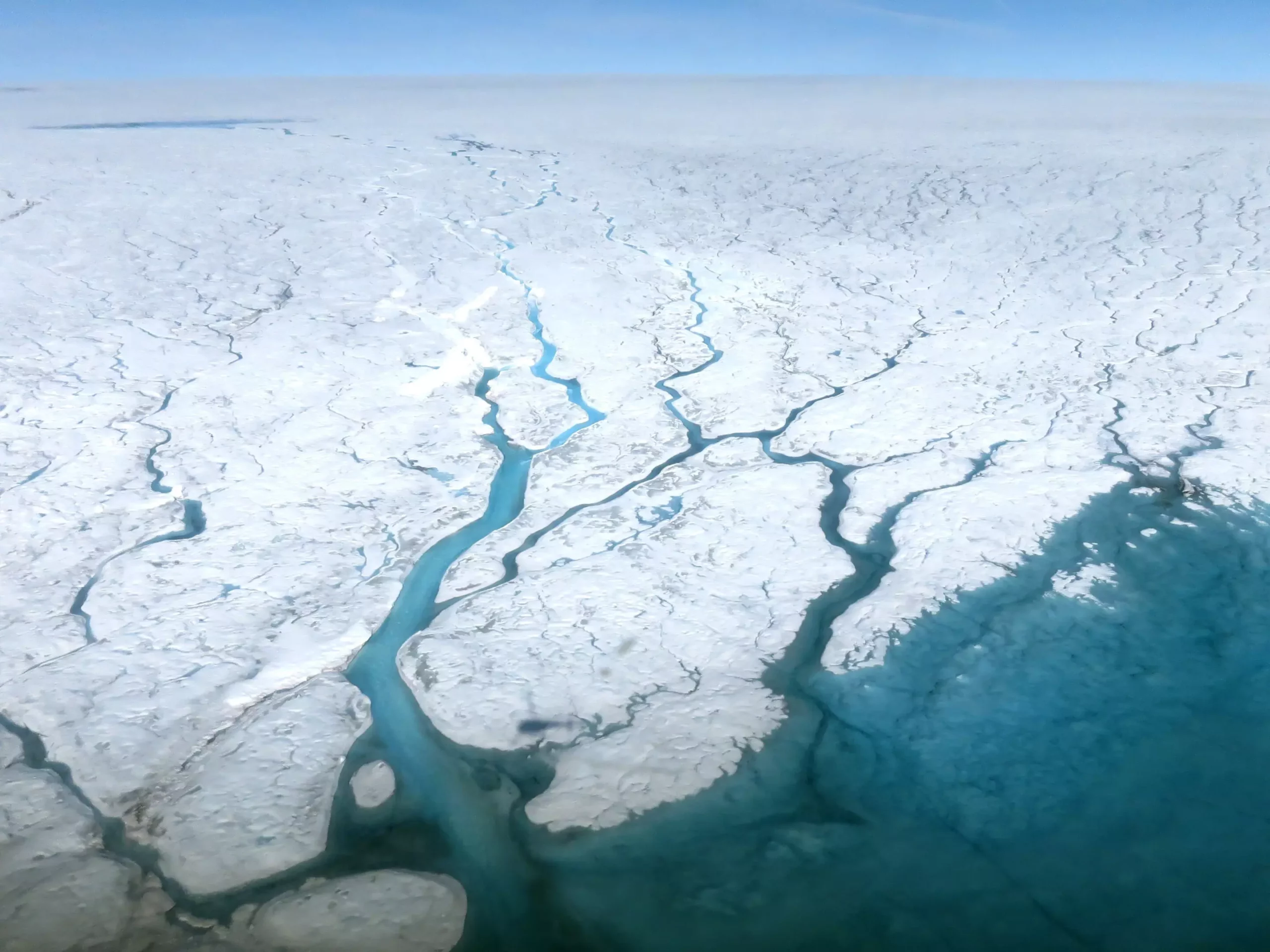Recent research has illuminated a crucial mechanism that affects the flow and freezing dynamics of meltwater in polar ice sheets, a topic with profound implications for global sea level rise. A collaboration between researchers at The University of Texas at Austin, NASA’s Jet Propulsion Laboratory (JPL), and the Geological Survey of Denmark and Greenland (GEUS) has unveiled insights into the formation of impermeable horizontal ice layers lying beneath the surface of glaciers. This newfound understanding, rooted in the work of graduate student Mohammad Afzal Shadab, challenges and enhances our comprehension of how ice sheet meltwater contributions to sea level fluctuations are assessed.
Ice sheets in Greenland and Antarctica, the planet’s largest reservoirs of freshwater, encapsulate layers of firn—an intermediary phase of snow that has yet to solidify into ice. This firn, being porous, ordinarily allows for melted snow to infiltrate and subsequently refreeze. Surprisingly, this process could effectively cut the potential runoff of meltwater by nearly half, as melting snow doesn’t immediately converge with rising sea levels. However, the researchers identified that the development of impermeable ice layers could reroute this liquid directly into the ocean, a revelation with critical implications for future sea-level projections.
In the face of climate change, which visibly augments ice melt, understanding how these dynamics function takes on an added urgency. Researchers postulated that in some cases, the meltwater could indeed accelerate the rate of glacial runoff, chiefly when impermeable layers form within the firn. Existing hydrological models, which previously oversimplified the interaction between meltwater and ice layers, established a baseline for understanding, but they missed a key variable: the interaction and balance between warmer meltwater moving downwards and the colder ice conducting heat, which ultimately influences how and where ice layers form.
The mechanisms at play are particularly complex, operating on a competitive basis. The study proposed a dichotomy between advection—the movement of warmer water down through the firn—and heat conduction from the cold ice above, which freezes that water in place. This nuanced understanding enables scientists to better predict how much meltwater the firn can retain and under what conditions ice layers develop.
A significant advancement in this investigation came from comparing observational data from a unique field study conducted in Greenland in 2016, where researchers utilized thermometers and radar to measure the movement of meltwater within the firn. Where prior hydrological models failed to align with ground data, the new findings consistently matched the observed dynamics. This validates the proposed mechanism and underscores the importance of applying real-world measurements to theoretical models, demonstrating a marked improvement in the prediction of meltwater retention capabilities.
The implications of where ice layers are found have also provided fertile ground for further exploration. As performance markers, these layers can signify previous thermal conditions—indicating a top-down growth during warmer periods and a bottom-up formation when climates are cooler. Understanding this depth-based chronology not only enriches our climatological database but also allows scientists to project future melt rates and potential sea level rise with a higher level of accuracy.
Current assessments indicate that Greenland is contributing more to sea level rise than its Antarctic counterpart, with estimates highlighting a staggering movement of approximately 270 billion tons of water annually from Greenland as opposed to 140 billion from Antarctica. Together, these figures equate to significant flooding potential on a global scale. Predictive models regarding the future contributions of these ice sheets to sea level rise show a wide variance, ranging from a 5 to 55-centimeter increase by the year 2100.
One of the breakthrough revelations of this study is the recognition that traditional models may not encapsulate the intricacies of ice barrier formation and their subsequent effects on meltwater dynamics. As researcher Surendra Adhikari articulates, the reality is significantly more complicated than previously thought, highlighting a critical challenge in accurately estimating potential sea level changes in an altering climate.
This research serves as a paradigm shift for understanding ice melt processes and their contributions to sea level rise. As studies continue, further scrutiny of the dynamics discovered here may enhance predictive models, facilitating better-informed policies and responses to an urgent global crisis. With the stakes high and time limited, ongoing research in the context of changing climate parameters is not merely beneficial; it is essential for the well-being of coastal ecosystems and human populations worldwide.

